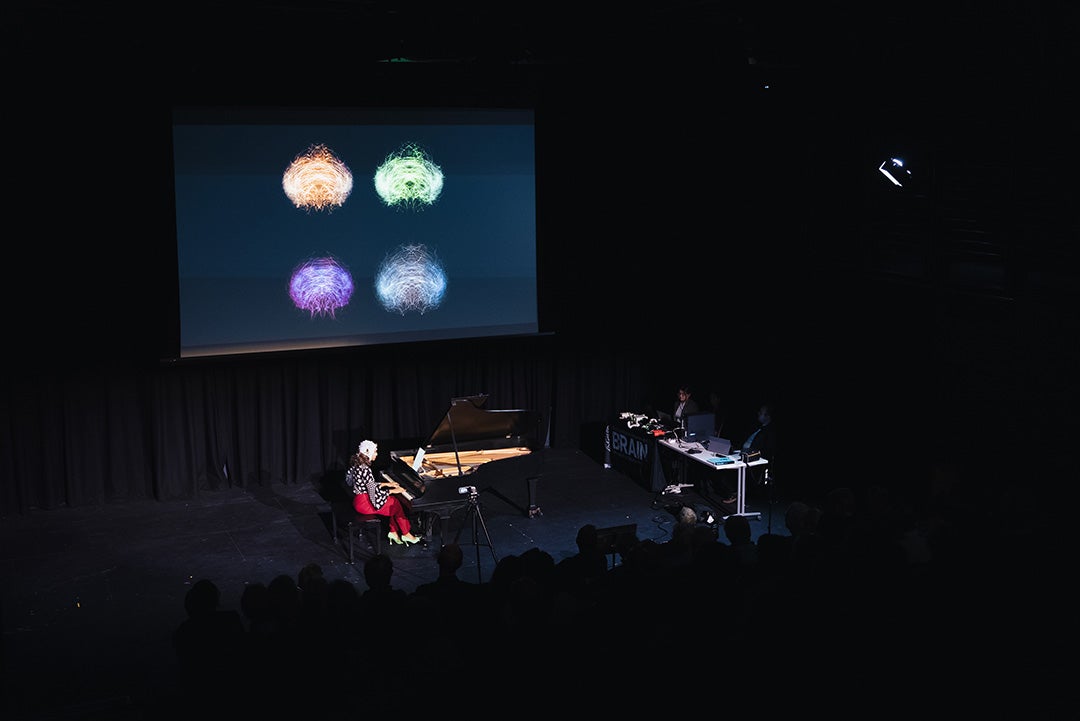The audience of a concert pianist is typically focused on the way her fingers dance across the keys or the expressions that cross her face. But at the March 20 concert at Rice University billed as a “Window into the Creative Mind,” the audience was also given a glimpse inside the mind of pianist and Shepherd School of Music Doctor of Musical Arts candidate Chelsea de Souza.
“(She) is going to improvise variations on classical and jazz themes while wearing a portable EEG cap, and we will have live visualizations of her brain,” said Anthony Brandt, Shepherd School professor of composition and music theory.
Those visualizations were designed by composer and multimedia artist Badie Khaleghian, also a doctoral candidate at the Shepherd School. They showcased how different areas of de Souza’s brain communicated as she performed.
The performance is a continuation of a collaboration between Brandt and University of Houston neuroengineer Jose Luis Contreras-Vidal but also an exciting first.
“We’re doing something that’s, as far as we know, very novel,” Brandt said, explaining that in most of the imaging experiments on improvisation, the performer is either very constrained — limited, for example, to even rhythms — or highly unconstrained. “We’re asking Chelsea to create variations near, middle and far from the source theme. In other words, she’s going to change the degree of relatedness and become more adventurous. When she goes farther, what we want to see is whether we can observe changes in her brain behavior as she roams different distances from the theme.”
The most exciting element for Brandt, he said, was the unknown.
“We don’t know what we’re going to find. It truly is an experiment,” Brandt said. “This is truly open-ended and about discovery. We have no idea whether it will be consistent from one theme to the next or whether we will be able to show any consistent behavior.”
Answers won’t come quickly either; it will take months for Contreras-Vidal and his team to review the data, but he’s looking forward to understanding how the improvisational variations de Souza made affected the EEG readings.
“We hope to see whether some variations are better to gain access to some parts of the brain. The idea is how we can make music selective to engage specific parts of the brain,” Contreras-Vidal said. “If we can understand the effect of music on brain activity, maybe we can use it to treat mental illnesses or some other conditions. Music as a prescription will be great.”
Science, Brandt added, really only turned its attention to the human mind about 125 years ago with the birth of psychology and technological advances such as neuroimaging coming along five decades ago.
“But the arts have been looking inside what we’re feeling and thinking as well as how we interact with each other for thousands of years,” Brandt said. “So this is really the start of a very powerful partnership, and it’s my conviction that the arts and sciences working together will yield the strongest results.”

